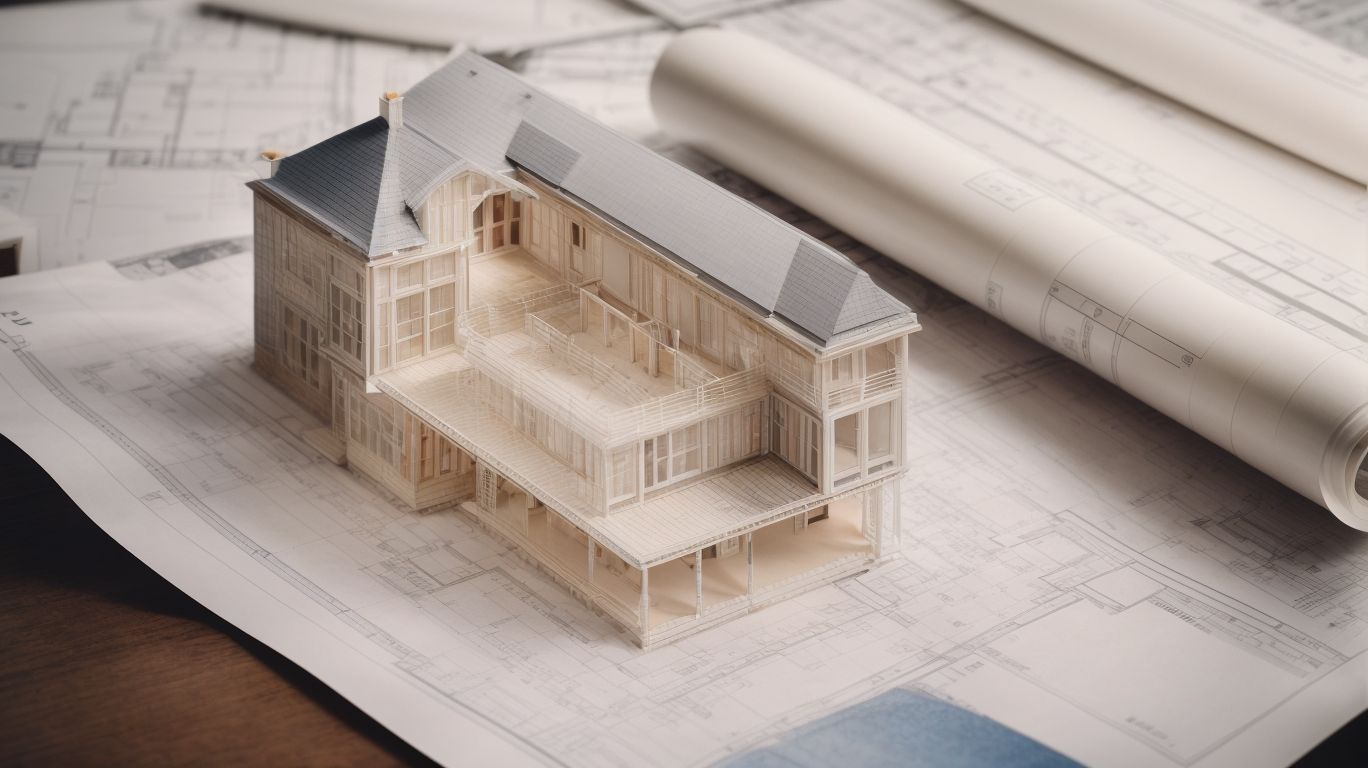
Open Concept Remodeling: Why Structural Engineers are Key
Open concept remodeling has become a popular trend in home design, creating a spacious and open feel by removing walls and barriers between rooms.
But what many homeowners may not realize is the crucial role that structural engineering plays in the success of such projects.
In this article, we will explore the importance of structural engineering in open concept remodeling, the key considerations and challenges, the benefits of hiring a structural engineer, and how they contribute to the design process. We will also discuss safety and cost considerations, as well as future trends in open concept remodeling.
Whether you are planning a renovation or simply curious about this trend, understanding the role of structural engineers is key to achieving a successful open concept remodel.
What Is Open Concept Remodeling?
Open concept remodeling is a popular home renovation approach that involves removing walls and barriers to create a more open and cohesive living space.
Open concept remodeling eliminates traditional compartmentalization, improving flow and connectivity between living areas and creating a more spacious and welcoming home. This modification enhances functionality and increases natural light and ventilation. The removal of walls can significantly impact home value, as open floor plans are highly desirable among modern homebuyers.
To achieve a successful open concept remodeling, careful budget consideration and a well-planned renovation process are essential. This ensures a seamless and stylish transition in interior design.
Why Is Structural Engineering Important in Open Concept Remodeling?
Structural engineering plays a crucial role in open concept remodeling as it ensures the structural integrity, safety, and stability of the renovated space, especially when dealing with load-bearing walls and support beams.
This expertise is essential for identifying the best ways to open up spaces while maintaining the necessary support.
When renovating a space to create an open layout, structural engineers assess the existing framework to determine how to redistribute loads and reinforce the structure accordingly.
Their input contributes to the overall safety and longevity of the building, providing peace of mind for homeowners and ensuring that the renovated space meets building code requirements.
Without this integral role, open concept remodeling projects could potentially compromise the structural integrity of the building.
What Are the Structural Considerations in Open Concept Remodeling?
In open concept remodeling, structural considerations revolve around the analysis of load-bearing walls, the installation of support beams, the assessment of construction materials, and compliance with building regulations. These are all essential aspects addressed by structural engineers.
Structural engineers play a vital role in evaluating the load-bearing capacity of existing walls and determining their potential for removal or reinforcement. This ensures that the space can be opened up without compromising the building’s stability.
During the remodeling process, support beams may be strategically positioned to distribute the weight of the upper levels and replace the support previously provided by removed walls. It’s important to carefully select construction materials that meet both aesthetic and structural requirements, while also complying with local building codes and regulations to ensure the safety and longevity of the remodeled space.
What Are the Benefits of Hiring a Structural Engineer for Open Concept Remodeling?
Hiring a structural engineer for open concept remodeling offers numerous benefits, including expert guidance to mitigate renovation risks, specialized expertise in structural analysis, and valuable recommendations for optimizing the renovation process.
The expertise of structural engineers is crucial in maintaining the structural integrity of a property. They prevent potential issues such as load-bearing limitations or compromising the building’s stability.
With their in-depth knowledge of construction materials and building codes, structural engineers can offer valuable insights into the most efficient and cost-effective methods for achieving an open concept layout. Their consultation and recommendations are essential in making informed decisions, resulting in a seamless and successful remodeling project.
How Does a Structural Engineer Contribute to the Design Process?
A structural engineer contributes to the design process of open concept remodeling by collaborating with architects and designers to ensure the integration of support structures, the preservation of architectural aesthetics, and the alignment of the renovation goals with the overall investment in the property.
Structural engineers play a critical role in assessing the existing structural integrity and potential load-bearing capacities of a space. This enables them to devise innovative solutions that support the open concept layout while maintaining safety standards.
Their focus on optimizing the layout ensures that the aesthetics and functionality of the space are balanced, enhancing the overall appeal and value of the property. By leveraging their expertise, structural engineers contribute to the seamless realization of the envisioned open concept design, fulfilling both aesthetic and practical requirements.
What Are the Steps Involved in a Structural Engineering Consultation?
A structural engineering consultation for open concept remodeling typically includes steps such as assessing the structural requirements, obtaining necessary building permits, conducting thorough building inspections, establishing a renovation timeline, and ensuring compliance with building safety standards.
The assessment of structural requirements involves evaluating the existing building materials and determining load-bearing capacities. It also involves devising appropriate structural modifications.
After obtaining necessary permits, it is crucial to schedule comprehensive inspections to identify any potential issues and ensure that the remodeling plans align with safety regulations. Establishing a clear renovation timeline helps in coordinating various tasks and resources, while strict adherence to safety standards plays a pivotal role in creating a secure and compliant living space.
What Are the Common Challenges in Open Concept Remodeling?
Open concept remodeling presents several common challenges, including potential renovation mistakes, timeline management, and the need for practical renovation tips to overcome specific challenges and ensure a successful remodeling process.
Homeowners often face the struggle of blending different areas seamlessly, maintaining a cohesive design aesthetic, and ensuring adequate functionality in the new layout.
Overcoming these challenges requires careful planning, collaboration with experienced contractors, and a clear vision of the desired outcome. Effective communication and setting realistic timelines are essential for managing the project efficiently and avoiding unnecessary delays. By understanding these potential hurdles, homeowners can navigate the open concept remodeling process with confidence and achieve their desired results.
How Does a Structural Engineer Address These Challenges?
Structural engineers play a pivotal role in addressing challenges related to open concept remodeling by leveraging their renovation expertise, construction knowledge, and proactive management of the renovation timeline to mitigate potential mistakes and ensure seamless project execution.
The expertise of structural engineers allows them to anticipate and address potential structural issues in open concept designs. This ensures that the design is both visually appealing and structurally sound.
Working closely with architects and contractors, structural engineers ensure that the design is implemented according to the latest building codes and regulations. This helps avoid costly errors and delays in the remodeling process.
In addition, structural engineers take a proactive approach by conducting thorough site inspections and structural assessments. This helps identify and address any existing issues, contributing to the successful completion of open concept remodeling projects within the established timeline.
What Are the Safety Concerns in Open Concept Remodeling?
Safety is a critical concern in open concept remodeling. This encompasses aspects such as building safety regulations, the acquisition of proper permits, and the need for thorough building inspections to ensure compliance and mitigate safety risks during the renovation process.
The importance of adhering to safety regulations cannot be overstated, as they are in place to protect both the homeowners and construction professionals from potential hazards. Obtaining the necessary permits is essential for ensuring that the remodel meets all legal requirements and standards. Conducting thorough building inspections helps identify any potential safety concerns and ensures that the remodeling work is carried out to the highest safety standards.
How Can a Structural Engineer Ensure the Safety of the Remodel?
Structural engineers ensure the safety of open concept remodeling through rigorous building inspections, proactive risk assessment during the renovation process, and adherence to building safety standards, thereby mitigating potential risks and promoting a secure remodeling environment.
Their expertise in evaluating the structural integrity of a building, identifying potential hazards, and recommending necessary reinforcements plays a crucial role in safeguarding the occupants and the overall stability of the renovated space.
By staying updated with the latest codes and regulations, they ensure that the remodeling project complies with all necessary safety measures, including seismic retrofitting, load-bearing capacity assessments, and fire safety protocols.
Their meticulous attention to detail and comprehensive risk management significantly contribute to creating a secure and resilient open concept remodeling.
What Are the Cost Considerations in Open Concept Remodeling?
Cost considerations in open concept remodeling extend to factors such as renovation budgeting, material costs, and the procurement of necessary building permits, all of which play a pivotal role in managing the overall expenses of the renovation project.
Balancing these financial aspects is crucial in ensuring that the renovation stays within the proposed budget. Budgeting for open concept remodeling involves a detailed assessment of costs for labor, materials, and any unforeseen expenses that may arise during the renovation process. Material costs vary widely depending on the quality and type of materials chosen, with options ranging from economical to high-end. Permit expenses also need to be factored in, as these costs can fluctuate based on the location and scope of the renovation. Taking these financial considerations into account can help homeowners make informed decisions and avoid unexpected financial burdens during the renovation.
How Can a Structural Engineer Help Keep Costs Down?
Structural engineers contribute to cost management in open concept remodeling through their construction expertise, efficient permit acquisition, and strategic recommendations that optimize the renovation investment and help control overall renovation costs.
Their deep understanding of construction materials, building codes, and load-bearing capacities enables them to propose efficient structural solutions. These solutions minimize the need for costly alterations and ensure compliance with regulatory standards. By streamlining the permit acquisition process, they also help avoid delays and additional expenses.
In addition, their strategic recommendations for material choices and design adjustments play a crucial role in maximizing the value of renovation investments. This is achieved while keeping costs under control, making their services invaluable for any renovation project.
How Can Homeowners Benefit from Open Concept Remodeling?
Homeowners can benefit from open concept remodeling by enhancing the property’s value, optimizing the living space for a more cohesive environment, and facilitating innovative interior design opportunities, thereby maximizing the return on their renovation investment.
A home with an open concept layout tends to have a higher market value due to the appeal it holds for potential buyers. The removal of walls and barriers opens up the living space, creating a more spacious and welcoming atmosphere. This layout also allows for efficient use of natural light, making the interior feel brighter and more inviting.
The open concept design presents endless possibilities for creative interior decor and personalized layout choices, reflecting modern living preferences and lifestyle trends.
What Are the Future Trends in Open Concept Remodeling?
The future trends in open concept remodeling center around innovative home renovation approaches, evolving renovation goals, and tailored recommendations that align with the dynamic preferences and lifestyle needs of modern homeowners.
Emerging trends in home design focus on creating smooth flow between living spaces, utilizing multifunctional design elements, and maximizing natural light for a spacious feel.
Homeowners are now seeking customization and personalized touches, leading to a rise in unique architectural features like statement-making kitchen islands and open shelving.
There is also a growing emphasis on sustainability and eco-friendly materials, reflecting the increasing environmental consciousness among homeowners.
The integration of smart home technology and flexible furniture arrangements caters to the evolving lifestyles of modern families.




No Comments